Subscribe to our ▶️ YouTube channel 🔴 for the latest videos, updates, and tips.
Relationship in Sets using Venn Diagram
The relationship in sets using Venn diagram are discussed below:
• The union of two sets can be represented by Venn diagrams by the shaded region, representing A ∪ B.
A ∪ B when A ⊂ B
A ∪ B when neither A ⊂ B nor B ⊂ A
A ∪ B when A and B are disjoint sets
• The intersection of two sets can be represented by Venn diagram, with the shaded region representing A ∩ B.
A ∩ B when A ⊂ B, i.e., A ∩ B = A
A ∩ B when neither A ⊂ B nor B ⊂ A
A ∩ B = ϕ No shaded part
• The difference of two sets can be represented by Venn diagrams, with the shaded region representing A - B.
A – B when B ⊂ A
A – B when neither A ⊂ B nor B ⊂ A
A – B when A and B are disjoint sets.
Here A – B = A
A – B when A ⊂ B
Here A – B = ϕ
Relationship between the three Sets using Venn Diagram
• If ξ represents the universal set and A, B, C are the three subsets of the universal sets. Here, all the three sets are overlapping sets.
Let us learn to represent various operations on these sets.
A ∪ B ∪ C
A ∩ B ∩ C
A ∪ (B ∩ C)
A ∩ (B ∪ C)
Some important results on number of elements in sets and their use in practical problems.
Now, we shall learn the utility of set theory in practical problems.
If A is a finite set, then the number of elements in A is denoted by n(A).
Relationship in Sets using Venn Diagram
Let A and B be two finite sets, then two cases arise:
A and B are disjoint.
Here, we observe that there is no common element in A and B.
Therefore, n(A ∪ B) = n(A) + n(B)
Case 2:
When A and B are not disjoint, we have from the figure
(i) n(A ∪ B) = n(A) + n(B) - n(A ∩ B)
(ii) n(A ∪ B) = n(A - B) + n(B - A) + n(A ∩ B)
(iii) n(A) = n(A - B) + n(A ∩ B)
(iv) n(B) = n(B - A) + n(A ∩ B)
A – B
B – A
A ∩ B
Let A, B, C be any three finite sets, then
n(A ∪ B ∪ C) = n[(A ∪ B) ∪ C]
= n(A ∪ B) + n(C) - n[(A ∪ B) ∩ C]
= [n(A) + n(B) - n(A ∩ B)] + n(C) - n [(A ∩ C) ∪ (B ∩ C)]
= n(A) + n(B) + n(C) - n(A ∩ B) - n(A ∩ C) - n(B ∩ C) + n(A ∩ B ∩ C)
[Since, (A ∩ C) ∩ (B ∩ C) = A ∩ B ∩ C]
Therefore, n(A ∪B ∪ C) = n(A) + n(B) + n(C) - n(A ∩ B) - n(B ∩ C) - n(C ∩ A) + n(A ∩ B ∩ C)
● Set Theory
● Finite Sets and Infinite Sets
● Problems on Intersection of Sets
● Problems on Complement of a Set
● Problems on Operation on Sets
● Venn Diagrams in Different Situations
● Relationship in Sets using Venn Diagram
● Union of Sets using Venn Diagram
● Intersection of Sets using Venn Diagram
● Disjoint of Sets using Venn Diagram
● Difference of Sets using Venn Diagram
8th Grade Math Practice
From Relationship in Sets using Venn Diagram to HOME PAGE
Didn't find what you were looking for? Or want to know more information about Math Only Math. Use this Google Search to find what you need.
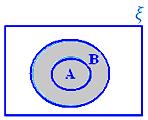
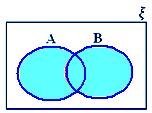
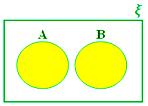
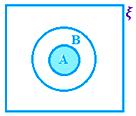






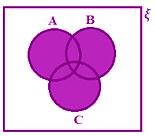
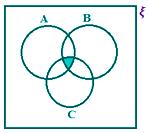
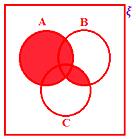
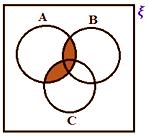
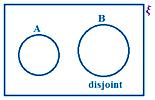
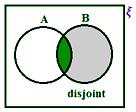


New! Comments
Have your say about what you just read! Leave me a comment in the box below. Ask a Question or Answer a Question.